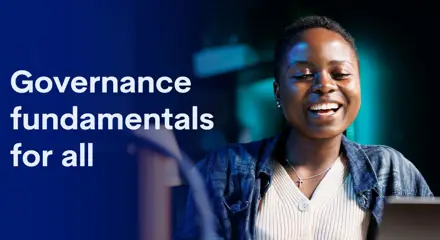- 15 February 2021
The author of this blog is Louise Thomson FCG, Head of Policy (NFP), The Chartered Governance Institute UK & Ireland
On 12 February 2021, Mrs Justice Falk released her judgment of the Keeping Kids Company (Kids Company) case, brought to court by the Official Receiver (OR), one that had taken 10 weeks in court, but was many more years in the making. This was the third investigation into Kids Company since its demise in 2015.
The first story in the saga was the NAO’s report into the Government’s funding of the charity (October 2015), followed by the House of Commons’ Public Administration Committee report The collapse of Kids Company: lessons for charity trustees, professional firms, the Charity Commission and Whitehall (January 2016). Sitting alongside this, part of the Kids Company universe, but broader in its scope, is Parliament’s Select Committee on Charities report: Stronger charities for a stronger society.
Like all good stories the plot line follows the usual story arc: exposition; rising action; climax; falling action; and resolution.
Exposition: Kids Company was a prominent charity widely acclaimed and courted by the famous and influential for its work with the vulnerable young. It had a leading television executive as its chair and a colourful and passionate character as chief executive (CEO). Funding appeared to have its peaks and troughs, with cash flow looking dicey at regular stages, however, the board and the CEO always seemed to manage to find money from somewhere to meet the needs of its growing client base. Having had an apparently successful operation for almost two decades, the media started to question the success of the charity.
Rising action: In February 2014, The Spectator published an article (The trouble with Kids Company: https://www.spectator.co.uk/article/the-trouble-with-kids-company) that detailed the dissatisfaction of a donor in not being able to identify how her £200,000 donation had been spent and the author questioning the level of demand the charity was trying to meet. There was also speculation that the charity used its government contacts to over-rule departmental decisions on funding for the charity. This could have been seen as sour grapes by individuals and charities without the same access to funds and influential contacts, or it could have been seen as legitimate scrutiny of a high-profile charity.
Climax: In late 2014 it was looking like the charity was struggling to secure significant government funding in order to put the charity on a stronger financial footing. The charity attracted more adverse media coverage. The board was trying to fight fires on more than one front: financial and reputational. Government funding offered in early 2015 was not sufficient to meet the needs of the charity, and it came with some strings: the moving of the CEO to a more ambassadorial role. The details of the precise way government funded the charity would be covered in a later NAO report.
What appears to have been the fatal blow to the charity was the allegation in the summer of 2015 of sexual abuse. Although the accusations were subsequently proved to be unfounded, they arose at a time when the Jimmy Saville affair was still widely felt. It would not be unreasonable to assume that potential funders simply did not want to be associated with the charity. Its fate was sealed and the charity wound up.
Falling action: After the demise of the charity, there was a flurry of activity to see what lessons could be learned and applied to the sector and the government’s relations with charities. It is during this time the NAO report, the Public Accounts Committee report and the House of Lords report into charities were published. Each would have a profound impact on the way the general public understood charities to be run, which influenced the way regulators would deal with charities.
In the background working away quietly, the Official Receiver was considering the case for disqualifying the trustees and the CEO as directors. The implications for the individuals concerned could have threatened their professional activities, preventing them from working at a similar level in both commercial and charitable companies for a given period. The implications for the sector, especially those charities incorporated under company law, could have been transformative, fundamentally changing the way charities are governed and led.
Resolution: It could be argued that the judgment released on 12 February is the denouement in this story, with a comfortable outcome that should leave the sector with a warm glow. The praise given to the trustees in their attempts to do the right thing was combined with an awareness by the judge that good people willing to undertake a public service as charity trustees should not be judged in the same way as directors of commercial entities.
However, the sector would do well to learn from the wider governance issues that are not addressed in the judgment, but which get the governance professional’s antennae twitching. The aim of the Official Receiver’s case was to establish whether the operating model was sustainable and whether the trustees and CEO were competent in performing their duties, particularly in respect of the oversight of the CEO. Wider governance is not directly addressed in the judgment, but some of the evidence would suggest that governance could have been better: minutes; information flows; and succession planning. . The story for Kids Company and the wider sector is not over yet.
Future episodes in the saga could include The OR fights back and The rise of the Charity Commission. Whatever happens next, the Kids Company saga is a charity governance story that will reach legendary status, and as with so many legends, the truth can sometimes be ignored and/or embellished, but the underlying themes remain constant: good governance is not just a nice to have, it is essential for an organisation to deliver its purpose, whether charitable or otherwise. With it, we may have been able to fit the story arc into a much shorter experience with a happier outcome for the clients of the charity. For the Kids Company case, I do not think we have reached the climax yet, let alone the resolution. The story is left to the OR and Charity Commission to continue.
Louise Thomson FCG, Former Head of Policy (NFP), The Chartered Governance Institute UK & Ireland.
The outcome of the court case into the governance of Kids Company has the potential to impact charity governance considerably.



